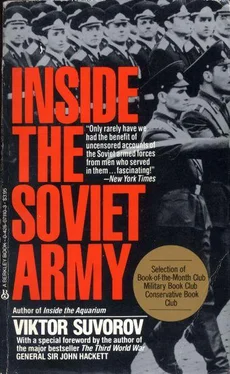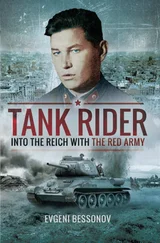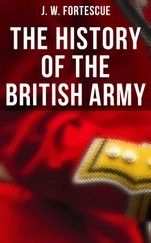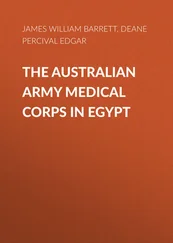There is no doubt that these activities enable the Politburo, without great difficulty, to empty the pockets of those in the West who will not understand that they are dealing with organised crime, committed by a state which is operating on a world-wide scale.
PART THREE
COMBAT ORGANISATION
1
We have already seen that the unit known as a `motor-rifle regiment' in the Soviet Army is in fact an all-arms unit with half the numerical strength of brigades in Western armies, which is nevertheless equal or even superior to the latter in fire-power and striking-power. This position is reached through the merciless exploitation of Soviet soldiers, who are regarded solely as fighting machines, rather than as human beings who require rest, good food, recreation and so forth.
Having a strength of 2,000, a motor-rifle regiment is equipped with 41 battle tanks, 3 reconnaissance tanks, 100 armoured personnel carriers, 6 130mm heavy assault guns, 18 122mm self-propelled howitzers, 6 `Grad-P' multiple rocket launchers, 18 self-propelled mortars, 18 automatic grenade launchers, 4 self-propelled anti-aircraft guns, 4 surface-to-air missile complexes, 100 light anti-aircraft and several hundred light anti-tank weapons, including the `Mukha', and the RPG-16 anti-tank rocket launchers, both portable and mounted on vehicles, together with the requisite engineer, chemical warfare, medical, repair and other supporting sub-units.
A modern Soviet tank regiment is organised along almost exactly the same lines as a motor-rifle, regiment, except that it has three tank battalions rather than one and one motor-rifle battalion instead of three. Its other sub-units are exactly the same: a battalion of self-propelled artillery, a battery of multiple rocket launchers, an anti-aircraft battery, reconnaissance, communications, engineering, chemical warfare and repair companies. The strength of such a regiment is 1,300. It has considerably fewer light anti-tank weapons than a motor-rifle regiment, reasonably enough in a regiment with a total of 97 tanks, since tank guns are the best of all anti-tank weapons.
2
A Soviet motor-rifle division is more of an all-arms unit than a motor-rifle regiment, containing, as it does, sub-units with the most varied functions and capabilities. The organisation of a division is simple and well-balanced. The strength of a motor-rifle division is 13,000. It is commanded by a Major-General. It is made up of:
A headquarters staff.
A communications battalion-the division's nerve-system, used for communications with all its elements, with the higher command and with neighbouring divisions.
A reconnaissance battalion-the eyes and ears of the division.
A rocket battalion-the most powerful weapon in the hands of the divisional commander, with six launchers which can fire chemical and nuclear weapons for distances of up to 150 kilometres.
An independent tank battalion-the divisional commander's bodyguard, which protects divisional headquarters and the rocket battalion, and which can be used in battle when the divisional commander needs all his resources.
A tank regiment-the division's striking force.
Three motor-rifle regiments, two of which are equipped with armoured personnel carriers and light weapons and which attack on a wide front during an offensive, probing for weak spots in the enemy's defences. The third regiment, equipped with infantry combat vehicles and with heavy weapons, is used with the tank regiment to attack the enemy at his weakest point-`in the liver' as the Soviet Army says.
An artillery regiment-the main fire-power of the division-which consists of three battalions of 152 self-propelled howitzers and one battalion of BM-27 heavy multiple rocket launchers. In all, the regiment has 54 howitzers and 18 heavy rocket launchers. The full strength of the regiment is used in the division's main axis of advance, in which the tank and heavy motor-rifle regiments are also active-that is, in the area in which the enemy has been proved to be most vulnerable.
The anti-aircraft (SAM) regiment has as its primary task the protection of the divisional headquarters and of the rocket battalion. It must also provide protection for the division's main battle group, even though this is already capable of defending itself against enemy aircraft. The regiment has five batteries, each with six rocket launchers. In peacetime, two of the launchers of each battery are held in reserve and the fact that they exist must not in any circumstances be disclosed until the outbreak of war. This has led Western experts to underestimate the defence capabilities of Soviet divisions, believing that each regiment has only 20 launchers whereas in fact it has 30. In order to maintain this illusion, the armies of all the Soviet allies actually do have only 20 launchers in each regiment.
The anti-tank battalion acts as the divisional commander's trump card when he finds himself in a critical situation. Until then it is kept in reserve. It is brought into action during a defensive action, when the enemy's tanks have broken through fairly deeply and once the direction of his main thrust can be clearly identified. In an offensive it is used when the division's main battle force has broken through in depth and the enemy is attacking its flank and rear. The battalion is armed with 18 100 or 125mm anti-tank guns and six anti-tank missile complexes.
The engineer battalion is used, together with the anti-tank battalion, to lay minefields rapidly in front of enemy tanks which have broken through, in order to stop them or at least to slow them down in front of the division's anti-tank guns. It also clears mines ahead of the division's advancing troops during an offensive and helps them to cross water obstacles.
The chemical warfare battalion carries out the measures necessary for defence against nuclear, chemical or biological attacks by the enemy.
The transport battalion supplies the division with fuel and with ammunition. Its 200 vehicles enable it to move 1,000 tons of fuel and ammunition at the same time.
The repair battalion recovers and replaces combat equipment.
The medical battalion does the same, but for the division's personnel.
The helicopter flight, which has 6 helicopters, is used for command and communications duties and to land the division's diversionary troops behind the enemy's lines.
The division has a total of 34 battalions. Those battalions which are subordinated directly to the divisional commander are given the designation `independent'-for instance `Independent Communications Battalion of the 24th Division'. This system is also used in all higher formations. For instance, an Army consists of divisions. But it also contains regiments and battalions which do not form part of its complement, which are called `independent' as, for instance in the `41st Independent Pontoon Bridge Regiment of the 13th Army'.
The total complement of a Soviet motor-rifle division is 287 tanks, 150 infantry combat vehicles, 221 armoured personnel carriers, 6 rocket launchers, 18 130mm heavy assault guns, 18 anti-tank guns, 126 self-propelled and towed howitzers, 96 mortars and multiple rocket launchers, 46 mobile anti-aircraft missile complexes, 16 self-propelled automatic anti-aircraft guns, and hundreds of light anti-tank and anti-aircraft weapons.
3
A tank division is organised in the same way as a motor-rifle division, except that it has three tank regiments rather than one and one motor-rifle regiment instead of three. In addition, a tank division has no independent tank or anti-tank battalions, since its anti-tank strength is much greater than that of a motor-rifle division.
A tank division has 10,500 men. It is equipped with 341 tanks, 232 infantry combat vehicles, 6 rocket launchers, 6 heavy assault guns, 126 self-propelled howitzers, 78 mortars and multiple rocket launchers, 62 self-propelled anti-aircraft missiles and artillery complexes and hundreds of light anti-aircraft and anti-tank weapons. While it has fewer personnel, a tank division has far greater striking power than a motor-rifle division.
Читать дальше












